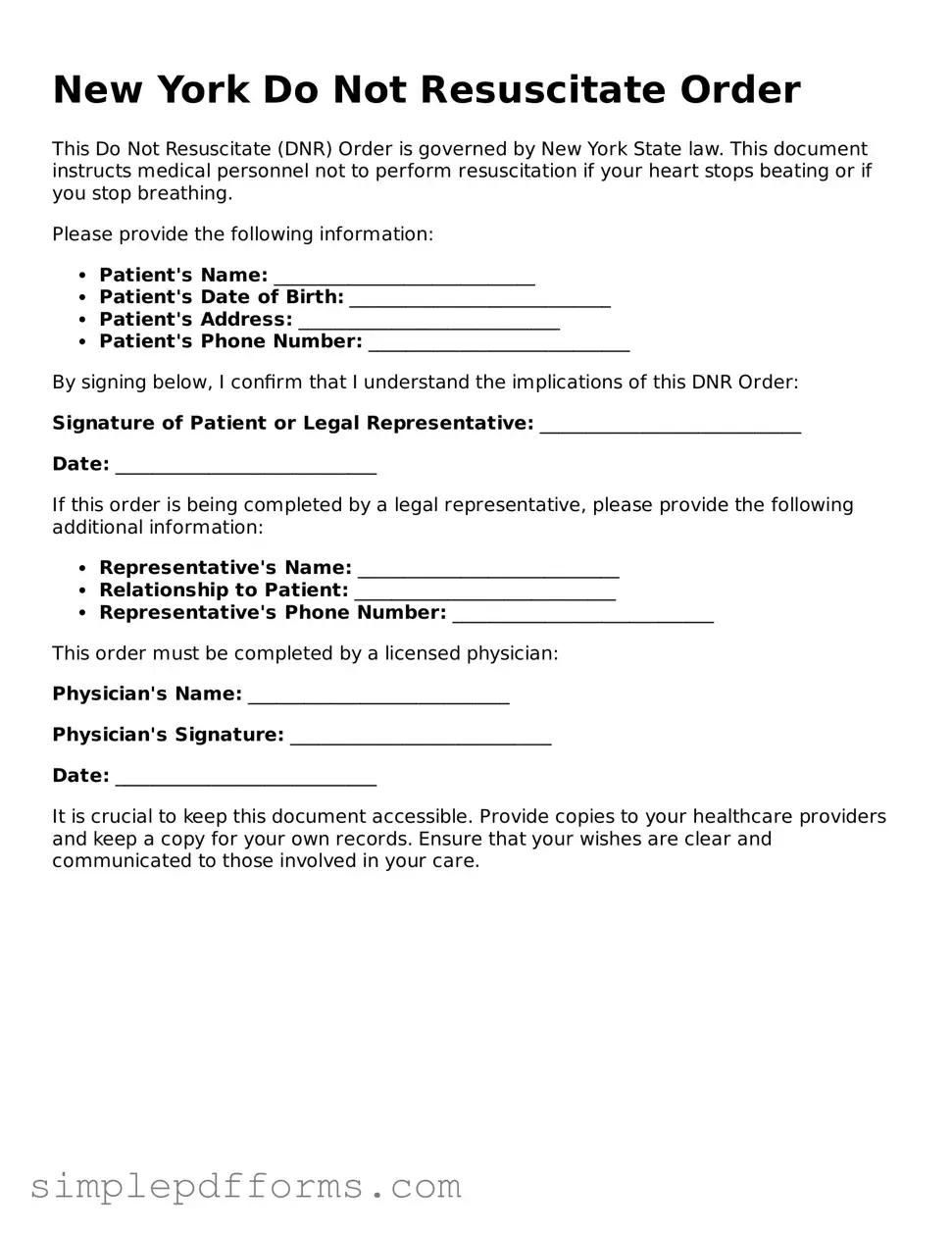New York Do Not Resuscitate Order
This Do Not Resuscitate (DNR) Order is governed by New York State law. This document instructs medical personnel not to perform resuscitation if your heart stops beating or if you stop breathing.
Please provide the following information:
- Patient's Name: ____________________________
- Patient's Date of Birth: ____________________________
- Patient's Address: ____________________________
- Patient's Phone Number: ____________________________
By signing below, I confirm that I understand the implications of this DNR Order:
Signature of Patient or Legal Representative: ____________________________
Date: ____________________________
If this order is being completed by a legal representative, please provide the following additional information:
- Representative's Name: ____________________________
- Relationship to Patient: ____________________________
- Representative's Phone Number: ____________________________
This order must be completed by a licensed physician:
Physician's Name: ____________________________
Physician's Signature: ____________________________
Date: ____________________________
It is crucial to keep this document accessible. Provide copies to your healthcare providers and keep a copy for your own records. Ensure that your wishes are clear and communicated to those involved in your care.
